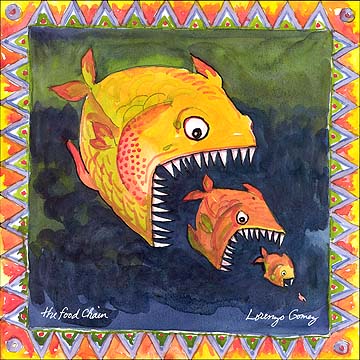Complex systems: Definition [1]
Lets start by defining some of the most important characteristics that are common in all complex systems.
- They are composed by many interacting parts.
- Each component has its own internal structure and each one perform an specific behavior or function.
- The behavior of a small part of the system affects in a non linear way the whole system. Complex systems present emergent behavior in such a way that any property of the system is not the simple sum of its parts. For example, the mass of a system composed by many particles is the sum of the masses of its components, whereas the organization of the system can not be obtained from the sum of individual organization degrees.
As a typical example of a complex system we can consider a cell, obviously, a cell is formed by many parts (ribosomes, nucleus, membrane, DNA, RNA, etc.), each part of a cell has its own specific function. The components of the cell respond in a non linear way when an external perturbation is done. For example sometimes a DNA mutation can be fatal, falciform anemia is a disease produced by one single mutation from the 600 aminoacids that built the beta-globin protein, that carried out oxygen absorption.

Complex Networks
The complex networks are a set of many connected nodes that interact in different ways. Is common that the nodes in an netrwork are also called vertices or elements, mathematically those are represented by the symbols , where
is the total number of nodes in the network.
In nature, we can find many different networks, meaning different kinds of nodes and connections. For example in a social network the nodes are people and the connections can be friendship relations. In the same society, we can define conecctions in a different way, for example: two people are connected if they are siblings. Obviously the network defined through the friendship relationship is different than the one defined through the sibling bond, because if two people are friends that doesn't imply that they are siblings and viceversa, however the nodes in each network can be the same. The last example is to note that with the same set of nodes we can define different networks depending on how we define the connections, that, of course depends on the phenomenon that we want to study. In the following tables are shown some of the networks and the interactions that we can define for complex networks in nature.
| Friendship | Two people are connected if they are friends |
| Scientific | Two scientists are connected if they have been coauthors in any paper |
| Family | Two people are connected if they belong to the same close family |
Information Networks
| Internet | Two computers are connected if they are in the same domain |
| WWW | Two web pages are connected if there is a link from one to the other |
| Words | Two words are connected if they are synonims |
Biological Networks
| Proteic | Two proteins are connected if they participate in the same metabolic path |
| Genetic | Two genes are connected if one regulates the expression of the other |
| Ecologic | Two species are connected if they have a predator-prey relationship |

